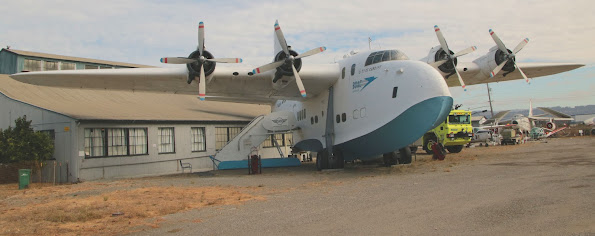There are times when I have been asked, “Where do you get
the ideas for your articles?” Sometimes
I write about things that I learn about as I travel around our beloved Golden
State. Sometimes I write about things
that capture my interest. Sometimes
there are Brothers who suggest things to me.
This time is the fault of the Grand Secretary, who posted on social
media that he had cocktails aboard the Matthew Turner, a tall ship built
by Call of the Sea in Sausalito and modeled after the Galilee, built by the
actual Matthew Turner in 1891 at his shipyard in Benicia. So, who was Matthew Turner? Why is there a tall ship named after
him? What else did he do? What impact did he have on California’s
history? Well Brothers, sit right back
and let me tell you a tale, not of a
fateful trip, but of a boy, born in Ohio, who heard the call of the sea and
eventually became a ship captain, the most prolific ship builder of the 19th
Century, and the “Granddaddy” of Pacific Coast shipbuilding.
Matthew Turner was born on June 17, 1825 in Geneva, Ohio
into a family that owned a sawmill and built lumber schooners to sail on Lake
Eire. Matthew designed his first boat,
the schooner G. R. Roberts which his father built and was launched in
1848. Matthew then took command of the
vessel. Matthew’s first wife died in
childbirth later that same year. In
1850, while on a voyage down the Mississippi, he heard about the discovery of
gold in California and, having nothing to keep himself in the Midwest, decided
to join the rush. Turner spent three and
a half years mining in Calaveras County and amassed a small fortune.
Turner saw a need for shipping in the Pacific Coast and
travelled to New York where he purchased the schooner Toronto and
brought her out to California. This was
the beginning of his career as a Pacific trader and sea captain. Turner purchase other vessels and expanded his
trade in cod and other goods to Tahiti and China. In 1868 he had the schooner Nautilus
constructed in Eureka. Seeking more
control over the building of his vessels, he established his first shipyard in
1872, in partnership with his brother, at Mission Bay in San Francisco. There began the long and storied career that
led to the building of 228 ships, the most built by any single shipbuilder in
the 19th century.
By 1882, Mission Bay was being filled in so Turner relocated
his shipyard to the foot of 12th Street in Benicia, where it
remained in operation until 1918. While
in Benicia, Turner constructed 154 of the 228 vessels that he is responsible
for. The Turner shipyard in Benicia was,
for some time, the largest private shipyard on the West Coast. The Turner Company also continued to conduct
trade through out the South Pacific. Among the notable ships built by Turner, besides
the aforementioned Galilee are:
the Lurline,
the first ship of Matson Lines,
the Benicia,
engaged in the Hawai’i and Australia trade,
the J.
D. Spreckels, build for the sugar trade between California and Hawai’i,
the Equator,
which was chartered by Robert Louis Stevenson and inspired his book, The Wrecker,
and finally, the HMCS Karluk, which served as the flagship for the Canadian Arctic Expedition.
Matthew Turner passed away in his home in Oakland on
February 10, 1909. Today he is the
namesake of not only the Matthew Turner but also Matthew Turner
Elementary School and Matthew Turner Shipyard park located at the site of his
former shipyard, both in Benicia. You
can visit the site of the former shipyard at the foot of West 12th
Street in Benicia. There are remains of
the building ways, a California Historic Landmark plaque, a concrete pad that
once supported a capstan for hauling and launching ships, a picnic area, and
some benches to sit along the shore of Carquinez Strait. The park opens at sunrise and closes at
sunset. There is ample parking.
GETTING THERE: To visit Matthew Turner Shipyard Park from
414 Mason Street, take Interstate 80 East to exit 30B I-780 toward
Benicia. From I-780 take exit 3b onto Military West. Take a right onto West K Street and follow
West K to West 12th Street.
Turn right onto West 12th Street.






